
All calm on Kumarakom...
This is no Thames. The coxswains aren’t second-skinned in Speedo, neither are they mic-ed up on live TV. Their fan bases do not extend beyond the four bunds of their native backwater villages. No frenzied tweeting after contest. No autograph rush, no sponsorship deals to plug protein supplements or aqua gear; not even the state broadcaster Doordarshan does a ‘how we did it’ interview. What makes none of this possible to an extent is the team size – not less than 100! Then this is exactly the charm of the biggest team sport in the world – snake boat racing of Kerala. Cohesiveness of the gargantuan, taming of the unwieldy, countless sinewy limbs to the rhyme. The races paddle history rooted in warfare, showcases unity across caste lines and as a cult, is demigod.
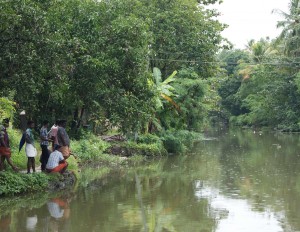
Hey, what's that sound...
Come September and over a dozen snake boat races set ablaze the backwaters of Kerala. But heralding the boat race season is the Champakkulam Moolam boat race in July and the big daddy – the Nehru Trophy boat race – which takes place on the second Saturday of August. The rest includes Aranmula Vallam Kali (Sept), Payippad Jalolsavam (Sept), Rajiv Gandhi boat race at Pulinkunnu (Aug/Sept), Neerettuppuram boat race (Sept), Karuvatta boat race, Kumarakom boat race, Kavannattinkara boat race, Kodungalloor boat race, Arppookkara Vanitha Jalamela (a women-exclusive race), Kottayam Mahatma boat race, Mannar boat race, Kumaranasan Smaraka Jalolsavam and the Indira Gandhi Memorial boat race at Kochi. The exact dates of many of these vary every year as they are dependent on lunar phases.

Let's take a closer look...
Despite a packed calendar, the sport is plagued by severe paucity of funds. Historically the people of Kuttanad region (the area where most of the backwaters are and where almost all of the races are held) have opened not just their hearts but coffers too to meet the humungous costs of building and maintaining a boat, team selection, trials and training. But the recent ravages caused by an unrelenting monsoon and the resultant havoc – the worst flood in seven years – which killed many, destroyed hundreds of houses, and landed thousands in refugee camps have put the onus of raising funds on participating clubs themselves. (The state government is on the same boat as the unfortunate Kuttanadans – embattled from within and fighting tooth and nail to survive; making the chances of it stepping in to bail out the beleaguered clubs slim.)
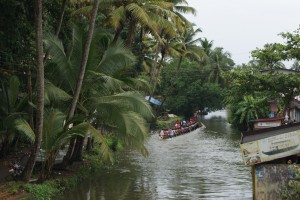
What in the world is THAT...
“We need not less than Rs 20 lakh to hold trials for 20 days,” said a boat club member. This includes a filling breakfast of parathas and meat – chicken or beef, sumptuous vegetarian lunch and Rs 700 per day salary for at least a 110 people (max 91 on the boat and the rest support staff). “While some youngsters from nearby areas are willing to forfeit their monetary remuneration for the love of the sport, not many can afford that as they have families to feed,” he says. Not much saved here anyway; maintaining the 100-120 feet-long goliaths is serious money. To reduce water resistance of the hull, it has to be periodically polished with eggs and fish oil. Snake boats are owned and maintained by whole villages generally – under the aegis of a club – and the collective pride is immense almost to the point of deification. What was strictly a village versus village event in the past is today a faceoff between clubs which have to hunt far and wide for capable rowers. The reason is money again; the running daily wage for a skilled labourer in Kerala goes up anywhere to Rs 1,000. To get a ‘real’ rower – one who is not just strong or buffed up, but has a sense of rhythm and team play is equally important – is not easy these days.
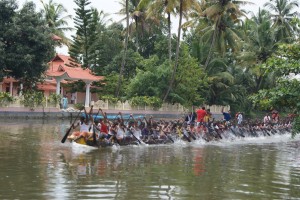
That's a snake boat...
While some club owners have already pulled out their chundan vallams (literally meaning ‘beaked boats’) or snake boats from this year’s races, many are staying afloat thanks to a more than cursory interest in the sport by private organisations and individuals. Like one software exporter from the Kuttanad area itself (“One click on any computer in the world and he gets money,” as a local said) who spends at least one crore (ten million) rupees on his snake boat and training his team every year. These luckier ones have already started practice in right earnest – the Kumarakom backwaters are alive with the robust strains of vanchipattu (traditional boat songs), the roars of aarpuvili (victory cries) and oars sloshing with military precision. Vouching for the popularity of the sport, the area is abuzz with tourists flocking in to see the row ups. The more enthusiastic lot even hire boats and goad the driver to take it as close as possible to the spattering snake. Then what we see is just the tip of the potential of the cult race.
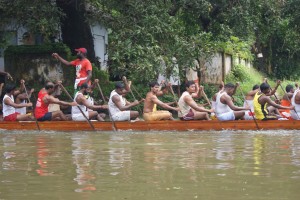
Practising...
The adrenaline rush and the level of spectator involvement a snake boat race guarantees is the genesis of the biggest prize money in the sport – the Nehru Trophy. In 1952 the first prime minister of an independent India, Jawaharlal Nehru, was visiting Alappuzha on his way from Kottayam. As he neared Alappuzha, his retinue was escorted by several chundan vallams giving him a rousing welcome replete with resonating aarpuvili. Man of the moment that he was, Nehru immediately demanded a trophy be instituted to be given to the fastest snake boat. Totally syncing with the mood, the ten snake boats which were there did an impromptu race – marking the beginning of the prestigious annual event.
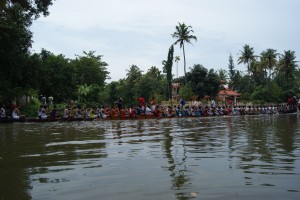
For the race season ahead
After the Nehru Trophy in August, the rest of the snake boat races are wrapped up in a jiffy through September. A little bit of innovating and a whole lot of restructuring, new life can be infused into the beleaguered sport. With bigger fishes in the picture, boat races – and not necessarily snake boat races – can be spread out through the year; smaller traditional boats like Churulan Vallam (capacity of 40 – 45), Vaipu Vallam or Iruttukutty (fast boats employed for piracy during war) can see a possible revival here. Frantic bidding and frenzied cheering need not just be the prerogative of a Barca or Man U. An entire state and a growing international crowd are already hooked to the sport; with effective public relations and media strategy in place, a bigger pie is there for the taking. Instead of public sector companies or private organisations, movie stars who enjoy an iconic status in the state should come forward and buy ownership stakes in the boat clubs who own snake boats. A Mammootty or Mohanlal in the stands will see a soaring spectatorship. Flocking supporters will enhance visibility, sponsors will come in droves.
Just now I got a call from Asianet; the channel wants to make a reality series on rower auditioning.
Better than ‘Jersey Shore’ I say.
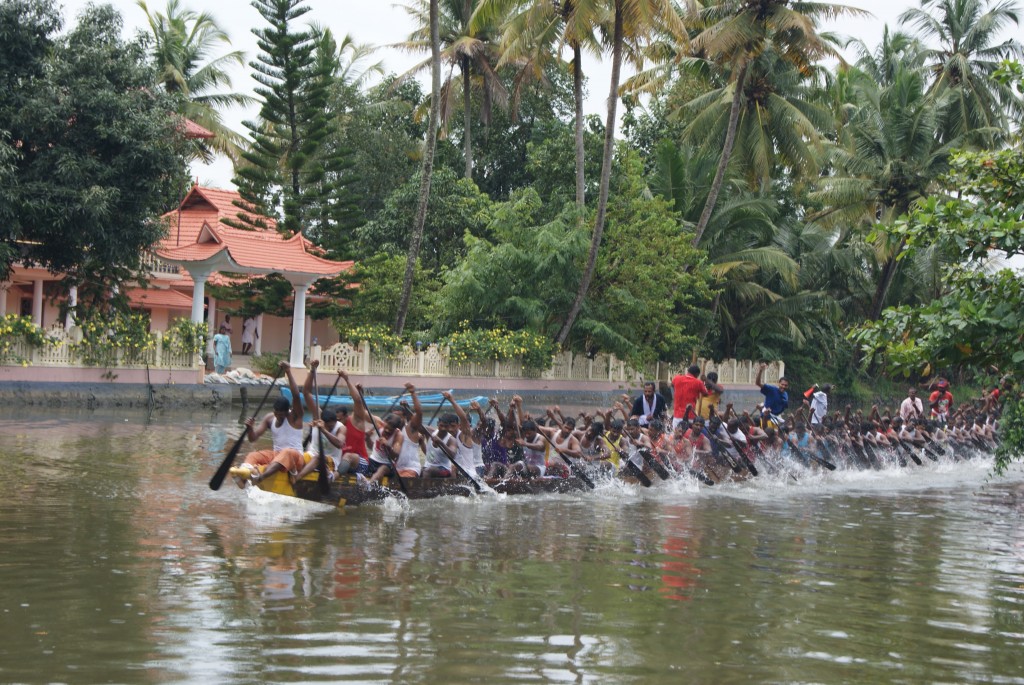
Reality series on rower auditioning ? Bring it on …..